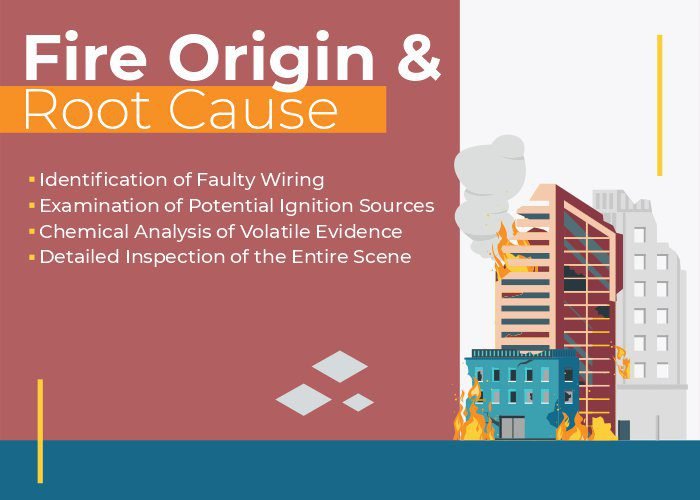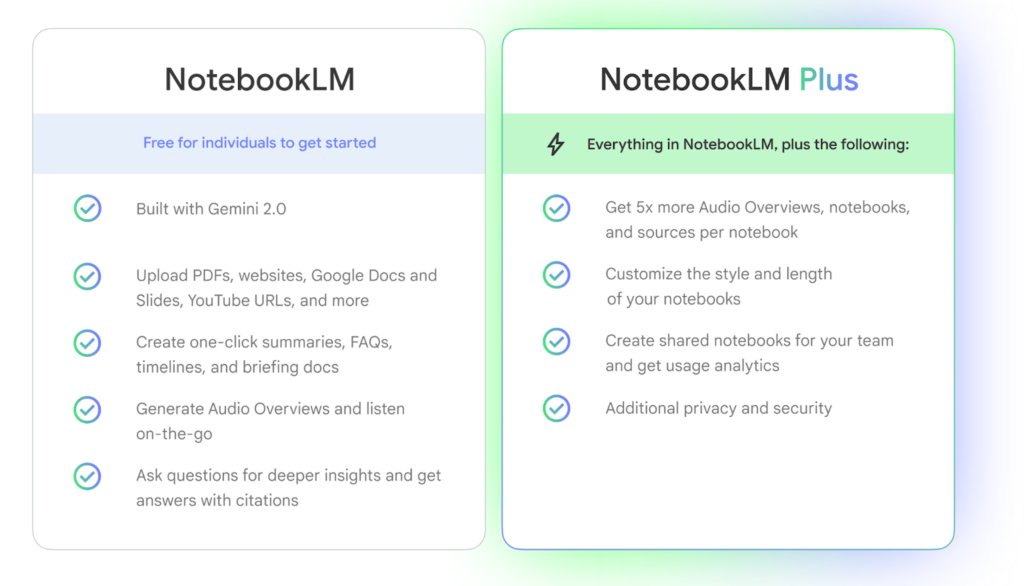Technology
Fire Origin and Root Cause Analysis Services: A Detailed Overview

Fire outcomes are devastating to properties, people, and the surroundings in particular areas. It is important to know when, where and how a fire occurs for prevention, enhancing safety measures, and legal requirements. Fire origin and root cause analysis services have the important function of revealing information on such matters. This blog focuses on explaining about Fire Origin and Root Cause core services and why they matter.
What is Fire Origin Analysis?
Fire origin analysis is mainly concerned with the determination of the precise area of ignition of a fire. It involves the determination of the fire starting area through analysis of burn surfaces, heat extremities and material. Scientists use scientific approaches in the assessment of the site and flow of the fire, to determine where it started from.
Why is Determining the Fire Origin Important?
Identifying the fire’s origin provides crucial insights for various purposes, including:
Safety Enhancements: It contributes to risk assessment and provides a mechanism to avoid similar occurrences in the future.
Legal Proceedings: Data collected when conducting analysis can be used to prosecute culprits, settle insurance claims, and in court cases.
Understanding Fire Dynamics: The origin shows how the fire behaves and where it moves, ideas which can be applied toward making improvements to the safety codes and the measures used by the fire fighters.
What is Root Cause Analysis?
While the above steps identify the beginning of a fire, root cause analysis goes a step further to identify why that fire started. This process determines exactly the actions taken or the failure or event that led to ignition. For example, it may bring light to the fact that burning wiring, arson or even a natural calamity caused the fire.
Some of the steps when conducting Fire Origin and Root Cause Analysis Services include:
A forensic process is used in fire origin and root cause analysis services to guarantee the right result. Here are the primary steps:
1. Scene Examination
Police and firefighters examine the fire scene very closely and a record of burn patterns, melted items and ash formation are collected. They offer main findings about the fire’s further development during the initial investigation.
2. Collection of Evidence
Materials collected at a scene include debris, electrical fragments, and any combustible material which is taken for analysis purposes. Preliminary research shows that proper handling of evidence is very important in maintaining evidential probity.
3. Witness Interviews
Survivors, bystanders and firemen are also questioned in order to gather some knowledge about facts which may indicate the specific course of the fire or some other events happened before and/or during the fire.
4. Analysis and Testing
Special equipment which includes the computer-aided 3D vision and chemical processing are employed in the substantiation of hypotheses and conclusions. In this phase, hypotheses are tested by recreating conditions in the experiment Sometimes conditions are recreated.
5. Reporting
A detailed report is provided in compliance with the conclusions which include the fire start, cause, and conditions. It is also good when one requires something legal for instance insurance purposes.
Potential Root Causes Included as Classified by RCA
Root cause analysis sometimes shows common causes for fires to take place. Some of the most common causes include:
Electrical Malfunctions: Poor wiring, excessive flowing of current or the connection of two points with as little resistance as possible.
Human Negligence: Overheating by leaving food in the kitchen, failure to store flammable substances properly or smoking.
Mechanical Failures: Overheating or lack of adequate maintenance of some of the machineries in the production factories.
Arson: Deliberate acts of arson or fire causing that results in a fire.
Natural Causes: Storms such as lightning or excessively heat in some regions.
Who is Responsible for Fire Origin & Root Cause Analysis?
The research processes are performed by forensic fire investigators, who are specialized professionals. When doing their analysis, they incorporate aspects of fire science, engineering as well as the formulation of the appropriate forensic investigation procedure.
Industries that Benefit from These Services
Fire origin and root cause analysis services are vital across multiple sectors, including:
Insurance: For accurate assessments in identification or claims.
Legal: In the cases of arson or of liability.
Manufacturing: For proposing design flaws in equipment for products.
Construction: To check if the construction that is being put up contains the right safety codes.
Public Safety: To improve on the measures used in preventing fires.
Advanced Technology as a Factor
Today’s fire investigations incorporate much technology mainly in order to offer accurate and efficient solutions. Items like infrared imaging, the usage of gas chromatography and computer simulation gives investigators even further understanding of combustion phenomena and fire patterns.
Advantages of Hiring Fire Origin & Root Cause Analysis Services
Employing professional fire origin and root cause analysis services offers several advantages:
Accurate Results: Specialization and proper equipment give guarantees concerning results relevance.
Improved Safety: Identifying the causes conceals the possibility to launch preventive measures.
Legal and Financial Support: They help in litigations and compensation strokes in case of claims.
Peace of Mind: Make it easier to determine the exact cause of a fire so as to reduce uncertainties that may affect the stakeholders.
Conclusion
Accident analysis and origins of fire services are important for comprehending the behaviours and triggers of fires in incidents. In this respect, regarding and analyzing how and why fire happened, such services are beneficial in enhancing safety measures, planning, and implementing decisions, and representing the accident in court. For private, business or general utilization of these services, this means that such investment is crucial to prevent and deal with the occurrence of fires.
Technology
How to Watch someone’s WhatsApp without letting them know?

Whatsapp has quickly gained popularity among a vast range of users. This chatting application offers numerous features that allow users to send audio, video, messages, documents, and other files.
On this platform, most users exchange personal information with one another. So your interest grows, and it’s no surprise that you begin to question How to watch someone’s Whatsapp without letting them know?
It might be your children who are in danger and have made contact with dangerous individuals. One of your employees may be selling firm secrets. You may be having relationship problems with your lover. You can keep track of them all by looking at their WhatsApp activities.
Why should you watch someone’s Whatsapp without letting them know?
The majority of people are concerned about the safety and privacy of their loved ones. As a result, the thought “should I spy on their Whatsapp activity” naturally emerges in your mind. You may feel bad for doing so, but that is natural.
- Protecting your child on the internet
As a parent, your responsibility toward a child is to protect them, to ensure whether they are safe or not. Kids might be threatened online and are terrified to tell their parents.
It is therefore essential to monitor your children’s online activity. You must know how to protect kids from cyberbullying and harassment if it occurs.
- The integrity of your relationship
The undeniable reality is that distrust, misunderstanding, and suspicion are the root causes of interpersonal issues among partners. As a result, you can use monitoring software like MobileSpy to determine whether or not your partner is being truthful in the relationship.
- Keeping your company’s secrets safe
It’s dangerous if one of your employees may be selling firm secrets. Therefore monitoring employee activities and devices is crucial to catch them.
Reading WhatsApp messages free using the Spy application
MobileSpy is the most effective and stress-free solution to keep track of someone’s WhatsApp activity. The installation and setup of this program do not need any technical capabilities. Spying on someone’s Whatsapp messages without their phone is difficult. Thankfully, with MobileSpy, anything is possible.
MobileSpy comes from a trusted company and is used by millions of people worldwide. The most appealing aspect of MobileSpy is using the latest technology that offers the highest security level. Therefore, We advise you to use MobileSpy before choosing any spy application.
MobileSpy Features
Some of the most important features you will get after choosing MobileSpy applications for monitoring WhatsApp activity are:
- Whatsapp spy
It can track both the sent and received WhatsApp messages and your target’s call details remotely. You can also track WhatsApp deleted messages from the control panel of MobileSpy.
- Photo and Video Spy
You can see on WhatsApp images and videos stored on Whatsapp messages of the target remotely, and you can also download them for viewing later.
- Social Media Spy
It allows tracking more social media applications like Facebook, Instagram, Twitter, and many more.
- Calls and contact tracking
MobileSpy allows you to trace with whom the target is talking, and you can browse all the calls made by the target remotely.
How to watch someone’s Whatsapp using MobileSpy?
Are you all set to monitor the target device remotely? Here is a simple guide on how to spy on someone’s Whatsapp.
- Go to the official website of MobileSpy and get registered yourself. After creating an account, you will get a login credential in your official email address.
- Install the MobileSpy application on your target device remotely.
- Then open your MobileSpy application using the login credentials.
- Search for the option Social media App-WhatsApp in the control panel on the left.
- After you open the WhatsApp window, you will get to all messages on the application.
- Now you can spy on someone’s WhatsApp without letting them know
In this way, you can conveniently track someone’s WhatsApp messages between two people along with multimedia files like audio and videos. The best part of this application is it works on a stealth mode.
Also, you can check details about with whom the conversation happened at what time. You can check their name, email address, contact details, and many more.
Using Whatsapp web to watch someone’s Whatsapp messages
Users can access their WhatsApp account on their PC or Mac using WhatsApp web. It is an easy process to read someone’s message using WhatsApp web, but it does not work unless you access the target phone.
Follow some steps below to proceed:
- To begin, you must first access the target phone and press the setting button.
- Select Whatsapp Web/Desktop from the menu.
- Using any browser, search web.whatsapp.com on your computer.
- It will now display a QR code. Scan the code with your target phone.
- Finally, you will get access to the WhatsApp account of the target.
Using Mac Spoofing Methods
This is the most popular and free method of cloning WhatsApp conversations without letting them know. Every mobile phone connected to the internet has a strange ID consisting of various numbers and letters separated by a hyphen, and it is known as a MAC address.
To spy on WhatsApp, create a clone in your phone, but make sure you get the same address as the victim’s phone.
Here are the steps listed below:
- First, uninstall the WhatsApp application from your phone.
- After that, access the target device and obtain the MAC address from their phone. Select the about phone option in the Android app’s settings, select the status option and seek a MAC address. Select the available option in the IOS application, then About phone, check for a Wifi MAC address.
- Using MAC spoofing software such as Wifispoof for iOS and BusyBox for Android, now change your MAC address and copy the target device’s MAC address on your device.
- Install WhatsApp again on your phone. Make sure you enter the phone number of the target device.
- An SMS will be sent with a verification code in the target phone. Please enter the code and delete it.
- In this way, you can log in to the target WhatsApp account.
Conclusion
As indicated above, there are several options to watch someone’s Whatsapp without letting them know. So, before you blame your child, partner, or employee, double-check. When you have doubt and strong evidence against them, you can use a spy app such as MobileSpy to track them.
Technology
Gaming in the Metaverse: What Meta Connect 2024 Means for Gamers

Without a doubt, the technology sector has evoked attention in the metaverse field throughout the world, particularly in connection with gaming. With advancements of AR and VR ways this event puts a finger on the wrist of Meta to pledge a more immersive metaverse. Gamers lead this revolution since Meta seeks to change the way we interact and engage with games online.
Introduction of Gaming Metaverse along the New VR Solutions
According to Meta’s project, the life of a gamer will never be the same. This includes everything from the headsets to the new controllers, all of them are user-friendly, and carry a promise for gamers to enhance in-game engagement. The new devices released by Meta increase the quality of images, as well as the comfort level associated with gaming, thereby making it easier to contribute to extended game play.
Social Gaming within the Metaverse Meta World
The interaction part still is something of great importance for Meta Connect 2024. The vision Meta foresees would have gamers not only gaming but socially engaging as well within the metaverse. This appeal to social interaction enhances teamwork where players can not only use their imaginations properly but also gaming, and communication in the virtual world.
The Upward Trend of Game Development for the Metaverse
As game developers are now able to make use of different platforms to design engaging do fully immerse the players as the metaverse expands with time and growth. Meta expands its investment in development platforms such as Spark AR and Meta’s Horizon Worlds that allows creators to create and develop interactive worlds where impressive attention to detail has been put into the designs. Based on the announcements from Meta one can expect a range of different genres to be present in the metaverse as each is catered for different gamers and the metaverse itself.
AR Technology Opens New Horizons for Gamers
For more gamers to be joined in the metaverse it would mean the alteration of using augmented meta functions, which is something that Meta is working on exciting prospects. With the advancements in AR technology one can show how real and virtual worlds can come together to design a captivating non-static interface. The greatest positive impact that AR tech would have is that it would allow individuals t use the metaverse within widely acknowledged environments.
The Significant Effects of Meta Connect 2024 for the Gamers
Meta’s announcements will only strengthen the blurs between the different worlds which are the real-life world and the world which is the virtual world; this is as the technology available changes as new gaming technology is invented. To sum up how gaming will look like in the near future as the gamers will be in immersive tags where gaming avatars and AI are in multifaceted worlds in the metaverse.
Final Thoughts
With the development of exciting new features such as VR, AR and far reaching social interactivity features, Meta Connect 2024 displays what the future of gaming looks like. Bearing in mind Meta’s constant progression, it’s easy to imagine another dimension of gaming, one that many gamers around the world are excited for.
Technology
Google’s NotebookLM Plus Launches for Businesses and Educational Institutions

NotebookLM, named one among Time Magazine’s ‘Best Inventions of 2024,’ is an AI-powered research assistant built by Google the usage of its Gemini models. With Google’s NotebookLM Plus, users can upload source documents (e.g., Google Doc and Slides, PDFs, web URLs, copied text) to a notebook to synthesize, uncover insights, and enjoy new ways of engaging with information. These include:
Asking NotebookLM questions about the data in those resources. NotebookLM will then reply with solutions from the resources uploaded, with inline citations from those documents to expose customers what NotebookLM primarily based its answers on.
Generating a variety of content based on the sources uploaded, such as summaries, briefing documents, timelines, FAQs, and even podcast-like Audio Overviews.
To date, millions of people and tens of thousands of organizations are already using NotebookLM to better understand and engage with the information that matters most to them.
Introducing NotebookLM Plus for Advanced Users
In response to growing demand from organizations to leverage NotebookLM in deeper ways, Google Cloud is announcing that NotebookLM Plus, the newest and most advanced version of NotebookLM, is now available to Gemini for Google Workspace customers.
NotebookLM Plus comes with a brand new set of functions and higher usage limits, consisting of 5 times greater Audio Overviews, notebooks, and assets in line with notebook.
In addition to what’s already included with NotebookLM, NotebookLM Plus allows organizational users to get five times more Audio Overviews, queries, notebooks, and sources per notebook; customize the style and length of their notebooks; and create shared notebooks for their team and get usage analytics.

Privacy and Security at Its Core
With its additional privacy and security features, organizations can use NotebookLM Plus with confidence, knowing their sources, queries, and responses stay within their organization. For example:
- Sales teams can upload their product roadmap and function specifications, competitor benchmarking analysis, client audio interviews, and marketplace research to NotebookLM Plus. As a result, it can help them prepare for customer meetings by creating an account plan to help their teams find information faster and better engage with customers.
- Marketers can use Google’s NotebookLM Plus to help summarize consumer developments and buy behaviors, draft communications, create campaign briefs, and greater – all based on market studies, customer segmentation evaluation, and advertising roadmaps.
- Educational users can add their district’s strategy plan, education standards, lecture notes, and course readings to get real-time summaries, guided lesson plans, discussion questions, quizzes, and more. They can also generate Audio Overviews to take learning on the go and make content more accessible, digestible, and engaging.
- NotebookLM Plus with enterprise-grade data protection is now available to businesses, schools, and universities as an Additional Service via Gemini for Google Workspace.
Industry Applications of NotebookLM Plus
For users of NotebookLM Plus through Gemini for Google Workspace, enterprise-grade data protection ensures that their uploads, queries, and the model’s responses are not used to train models and are not reviewed by humans. Customer data remains their data and any files uploaded, queries, and responses are not shared outside their organization’s trust boundary.
Users can only upload sources from Google Workspace that they have permission to access. Furthermore, they can control who has access to their notebooks and set more granular permissions within each notebook. Notebooks can only be shared within their organization.
Farhan Qureshi, Country Director, Google Malaysia on stage at the launch of Malaysia’s National AI Office, introducing the AI at Work initiative with Malaysia’s Ministry of Digital
Global Adoption of NotebookLM Plus
Last week at the launch of Malaysia’s National AI Office (NAIO), Google introduced the AI at Work initiative, a joint effort between the Ministry of Digital and Google Cloud to integrate Gemini for Google Workspace into the daily workflows of public officers, to help transform public service delivery through efficiency gains from AI. With today’s NotebookLM Plus announcement, local public sector organizations that have adopted Gemini for Google Workspace will also be able to access NotebookLM Plus as an Additional Service.
Availability
Google’s NotebookLM Plus for enterprises can also be purchased separately via Google Cloud. NotebookLM Plus for consumers will also be included in Google One AI Premium in early 2025. Learn more via the Google website.
About Google Cloud
Google Cloud is the new way to the cloud, supplying AI, infrastructure, developer, information, protection, and collaboration tools constructed for today and the following day.
Google Cloud offers a powerful, completely integrated and optimized AI stack with its own planet-scale infrastructure, custom-built chips, generative AI models and development platform, as well as AI-powered applications, to assist corporations transform. Customers in extra than 2 hundred countries and territories turn to Google Cloud as their depended on technology partner.
-

 Business4 months ago
Business4 months agoThe Disadvantages of Electric Skillets You Need to Know
-

 House4 months ago
House4 months agoHow Outsourcing Helps Agencies Save Costs and Better Allocate Their Resources
-
Business4 months ago
6 Key Benefits of Email Automation for Lead Nurturing
-

 Business4 months ago
Business4 months agoThe Art of Ceramic Bowls: Handmade vs. Machine-Made
-

 Business4 months ago
Business4 months agoApostille vs. Notarization: What’s the Difference and Why It Matters
-

 Technology5 months ago
Technology5 months agoSearch Engines that Search URL and not Description | Top URL Tools
-

 Entertainment6 months ago
Entertainment6 months agoUnderstand: Post-Apocalyptic Literature Bingo: Songs of Your Decay
-

 Other Blog5 months ago
Other Blog5 months agoWhat is the ://vital-mag.net Blog About?






